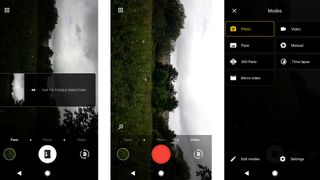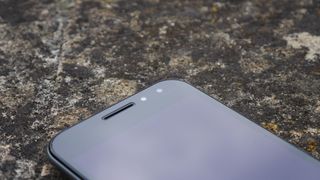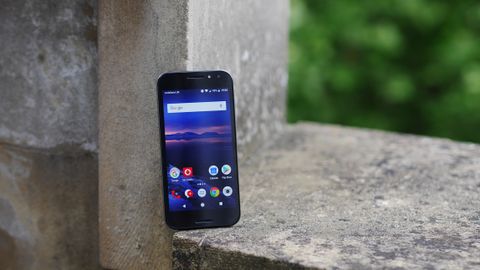Why you can trust TechRadar
Battery life
- Not even a day of life with moderate use
- 2,400mAh battery
Good battery life has always been a must for a successful smartphone. Before, it was mainly the preserve of the flagships, but now, with devices like the Lenovo P2, we are beginning to see better longevity at the budget end.
Unfortunately, the battery life on the Vodafone Smart N8 is slightly sub-par. Though the 2,400mAh battery may seem to be adequate for a phone of this size, what we found was that the device commonly failed to get through a day of moderate to heavy use.

In most cases a day would involve an hour of streaming with Bluetooth headphones on the morning commute, around an hour of calls, messaging and emails throughout the day and half an hour of light gaming in the evening.
All of this would usually see the battery conk out at around 7pm. This will be manageable for most, since by that point you’ll likely be home and able to plug it in, but it is certainly far from the 2-day dream.
The situation is no better when it comes to video performance. Running the TechRadar video test (a 720p video played at full brightness for 90 minutes) saw the battery drop from 81% to 53%, a 28% drop.
The Moto G5 for comparison dropped 22% and even that only has average life. So if you like to watch a lot of video on the go, the Vodafone Smart N8 isn’t for you.
Camera
- 13MP rear and 5MP front-facing camera
- Photos are low quality
Typically, even the most budget of blowers comes with a series of grandiose claims attached to its camera. Talk of phase detect autofocus, backside illuminated sensors and all sorts of other exotic tech end up in marketing pitches, and yet rarely to any real effect.
The Vodafone Smart N8 doesn’t come with a fancy aperture, or indeed anything else. Both cameras have a flash, and both also have a middle of the road resolution at 13MP and 5MP for the rear and front respectively, and that is it.
But the performance is what counts and sadly that is far from impressive.

In decent lighting, and with a static subject, the autofocus will lock on quickly enough, and produce shots that are reasonably true to life – but that is the best that can be said for them.
In most conditions, the focus will hunt continuously, completely unable to get a lock on anything moving faster than an asthmatic snail. Curiously, the phone also really struggles to get a focus in macro shots, particularly with red flowers.
High Dynamic Range (HDR) mode does make an appearance however. This essentially allows a camera to take three shots and combine them, for better dynamic range, colour and details.
The difficulties in focusing are made far worse when activating HDR mode though, and moving even an inch produces a weird ghosting effect – like an old-fashioned double exposure.

A ‘Night Mode’ also makes an appearance, but all this does is change the white balance and activate a slightly longer shutter, with limited effect.
There is also a ‘Pro’ mode, allowing you manually focus, which helps considerably in getting around the issues with autofocus.
Generally though, shots are grainy, mushy and noisy. Detail is poorly represented, highlights are completely blown out in relatively simple scenes and the autofocus is from another century.

The selfie camera fares much the same, producing noisy shots with mushy detail and poor dynamic range.
For £85, having a camera that isn’t quite the worst thing in the world is a small achievement, but this is the Vodafone Smart N8’s biggest failing.
Camera samples





Current page: Battery life and camera
Prev Page What's it like to use? Next Page Verdict and competitionSean is a Scottish technology journalist who's written for the likes of T3, Trusted Reviews, TechAdvisor and Expert Reviews.
